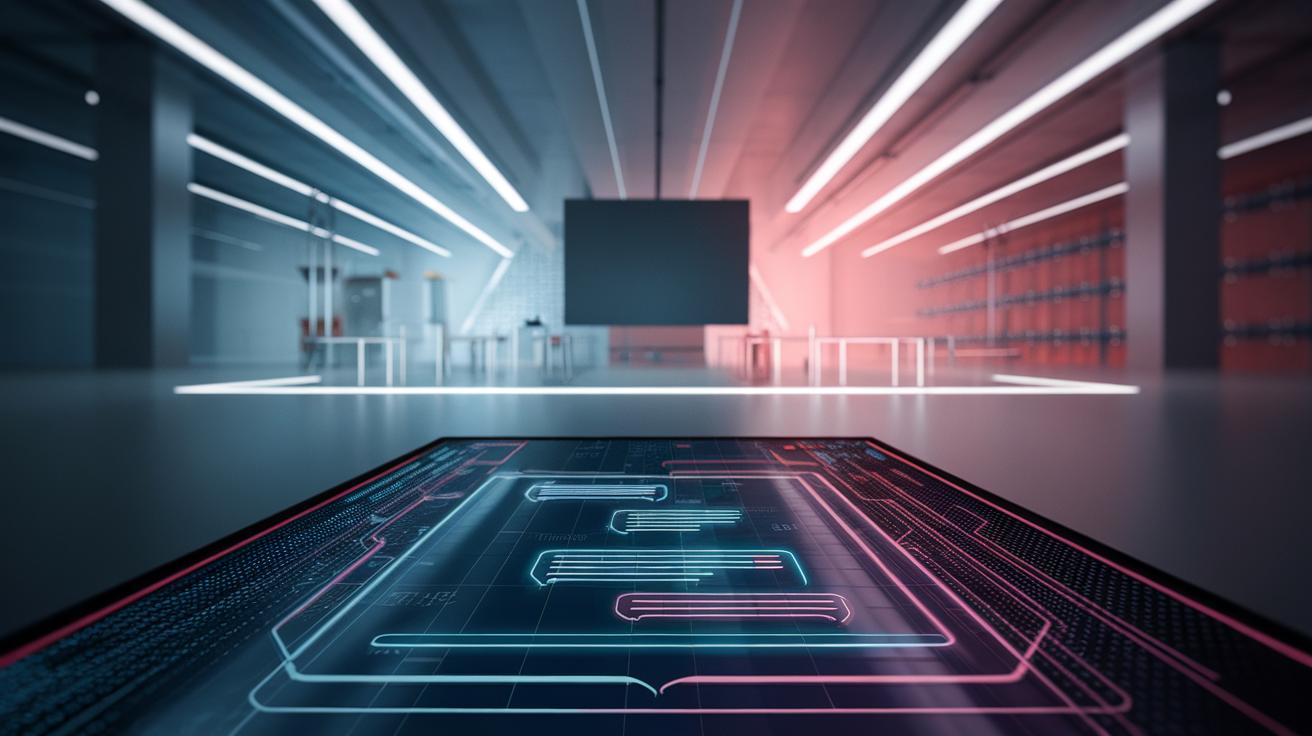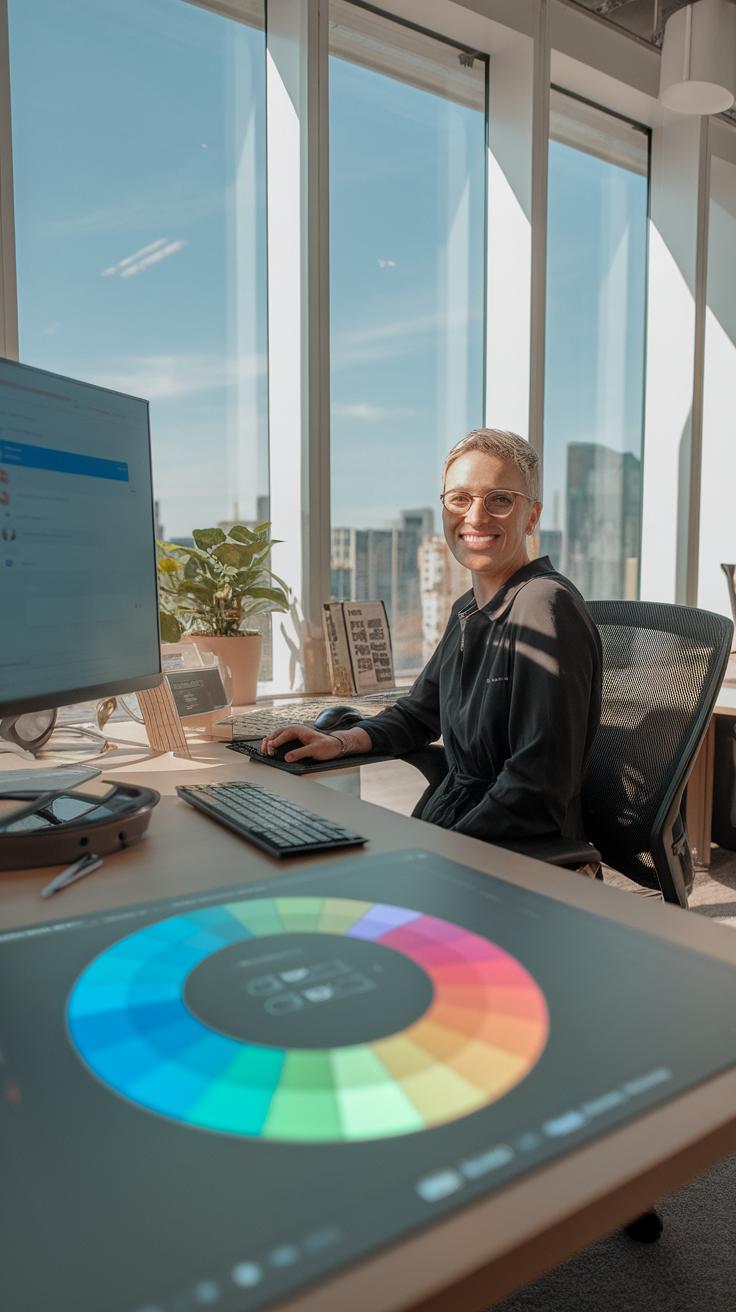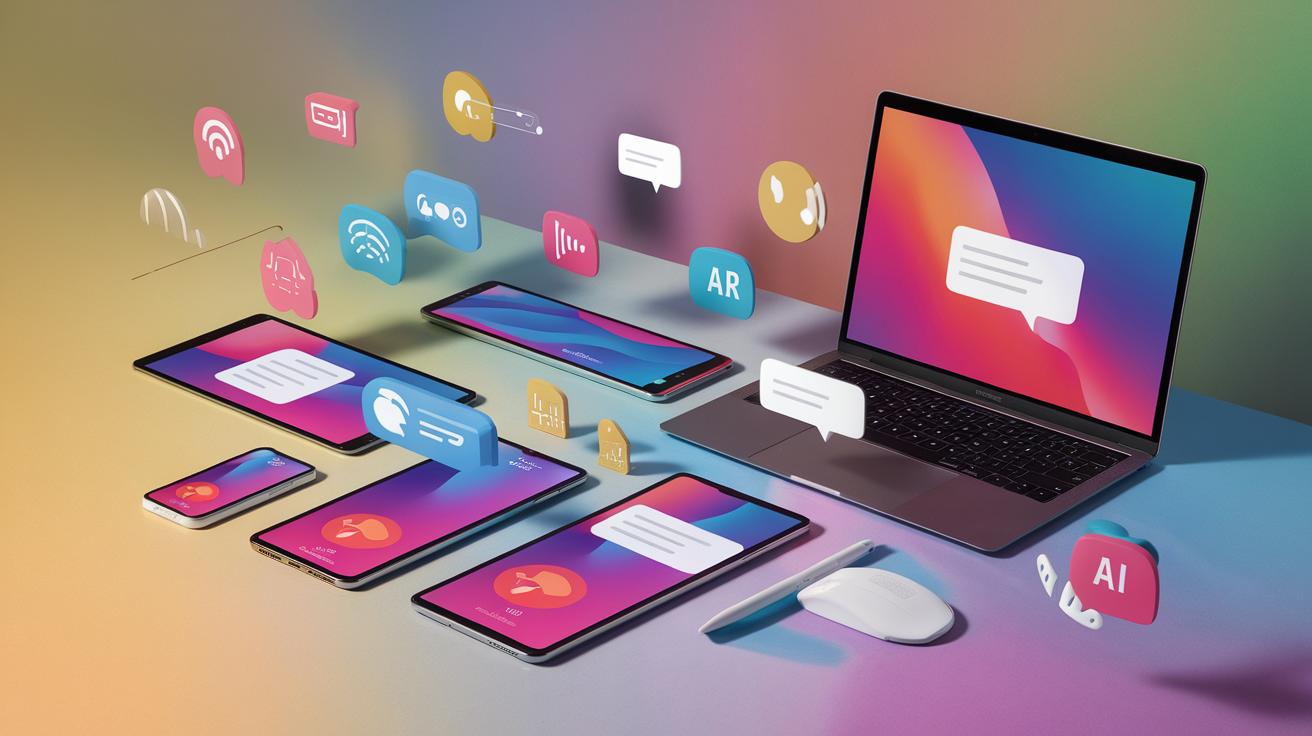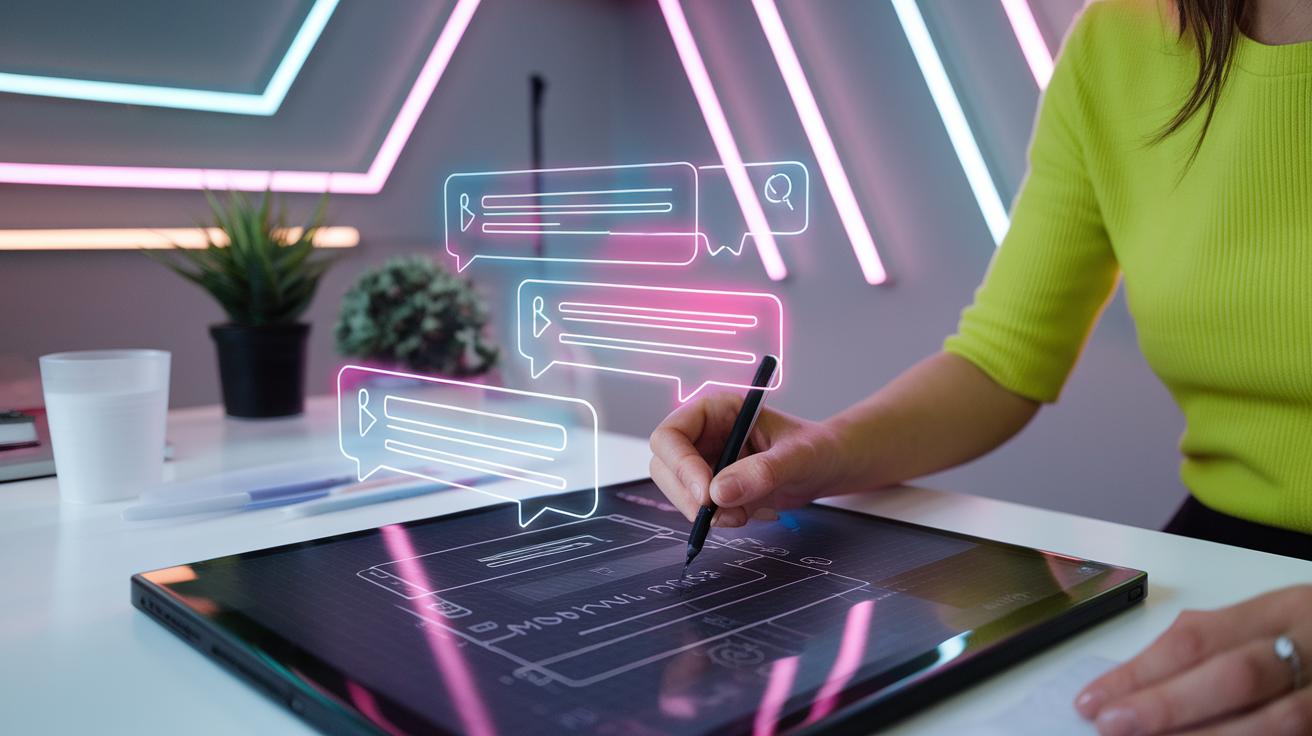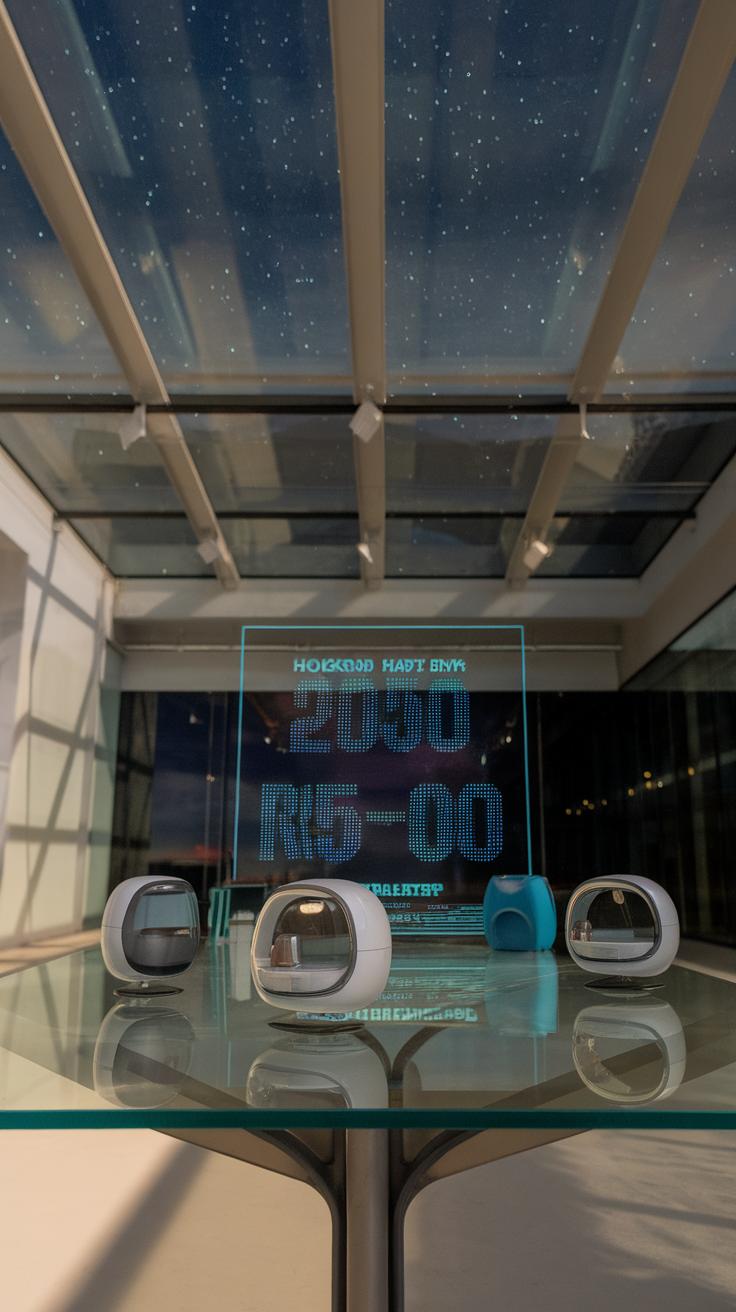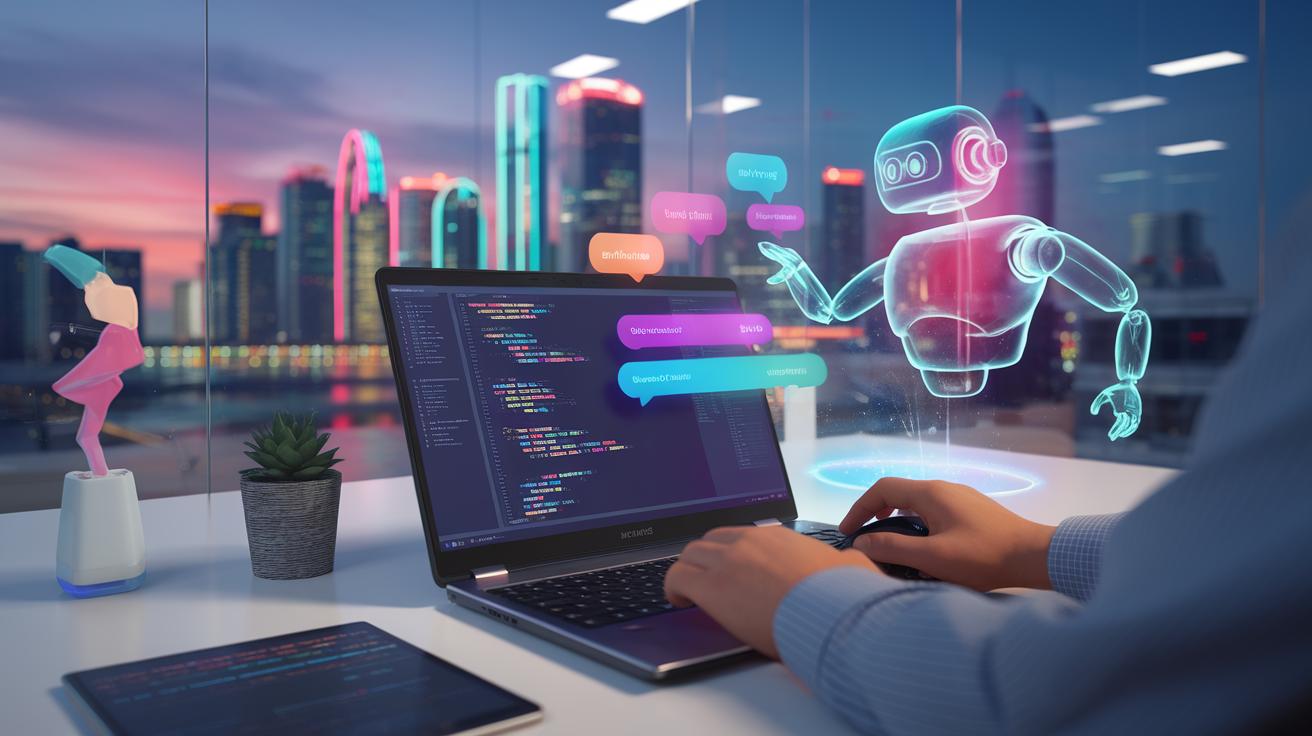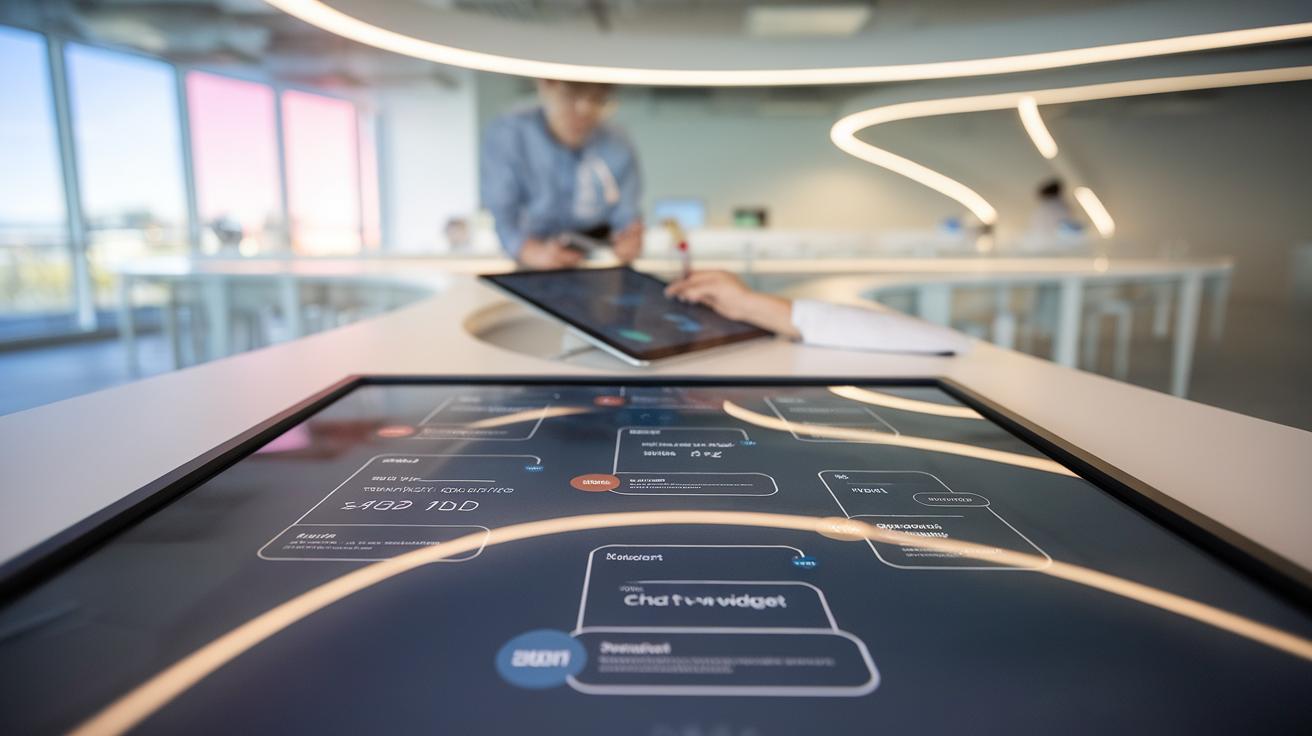Introduction
The progression of chatbots represents a significant stride in how businesses engage with customers. Initially, chatbots served basic functions, providing responses to straightforward inquiries. This simple structure evolved with advancements in technology, especially artificial intelligence and machine learning. Today’s chatbots can hold intricate conversations and provide personalized assistance. This change is essential for offering an enhanced customer experience, which is critical for retaining clients in a competitive marketplace.
The design of custom chat widgets plays a crucial role in this evolution. Companies now prioritize tailored chat solutions that reflect their brand identity and cater specifically to their audience’s needs. By leveraging innovative designs, businesses can create user-friendly interfaces. This transition fosters effective communication and strengthens relationships with customers. Understanding how chatbot evolution drives these design innovations can give you valuable insights into enhancing your own business’s online interaction.
Understanding Chatbots
Chatbots are software applications designed to simulate conversation with human users. They serve various functions in business communication, from customer support to lead generation. By automating responses, chatbots improve efficiency and user experience.
Historically, chatbots operated under simple rules. Early models used keyword matching and pre-scripted responses. When users input specific phrases, these bots provided set answers. For example, a basic chatbot might respond to “What are your hours?” with a predefined reply. This basic structure provided limited interaction but allowed businesses to handle common inquiries without human intervention. You may remember these early chatbots as basic online helpers that struggled with complex questions.
Today’s chatbots have evolved significantly. The shift from simple scripts to advanced systems opens new opportunities. As a business, how can you harness modern chatbots to enhance your communication strategy? This evolution toward customization and sophistication demands your attention.
Technological Advancements
New technology has transformed how chatbots work. Artificial intelligence (AI) and machine learning (ML) have played vital roles in this shift. These technologies allow chatbots to learn from interactions. They can understand natural language, making conversations feel more human-like. This change improves customer experiences, making it easier for users to get the help they need.
Consider a retail chatbot that can recommend products. Using AI, it analyzes user preferences. It suggests items based on previous purchases or browsing habits. This level of personalization increases sales and customer satisfaction. Businesses can now design chatbots that adapt quickly to trends or user feedback.
As you think about your business needs, how could these advancements impact your chatbot strategy? Do you aim for better engagement and support? Understanding these technologies could guide you to more innovative chatbot solutions.
The Rise of Customization
Customization has become a key trend in chat widget design. Businesses now understand that a one-size-fits-all approach does not engage customers effectively. You need to create a chat experience that reflects your brand’s identity and meets specific user needs. Customized widgets can include tailored responses, logos, colors, and even the tone of communication to align with your brand.
Why is customization so important? Personalized chat interactions improve customer satisfaction. A study showed that 70% of consumers prefer brands that recognize them and provide relevant offerings. You can engage users more deeply with a chat widget that speaks their language. Think about how unique offerings can enhance your customer service. Have you considered how a tailored chat interface could boost your business? The potential is vast.
UserCentric Design Principles
Creating effective chat widgets requires a focus on user-centric design principles. Start by identifying your users’ needs. What problems do they face? Gathering feedback helps you understand their expectations. This insight is the backbone of great design.
Usability must guide every decision. A simple, clean interface increases user engagement. Avoid cluttered layouts that confuse users. Clear buttons and easy navigation make interactions smooth. Think about how a user will experience your chatbot. Would they find it easy to locate information or initiate a conversation?
Incorporate accessibility features. Ensure your chat widget caters to diverse audiences. For example, use readable fonts and color contrasts. Testing your design with real users can reveal areas for improvement. How do users perceive your chatbot? Continuous iteration based on user feedback leads to better solutions.
Integrating Chatbots with Business Tools
Companies can enhance efficiency by integrating chatbots with existing business tools. Chatbots can connect with customer relationship management (CRM) systems, help desks, and email platforms. This integration streamlines communication and saves time. For example, a customer inquiry can automatically create a ticket in a help desk system, allowing teams to respond faster.
These integrations improve data management. You can track customer preferences and interactions better with chatbots that communicate with your CRM. This ability helps tailor services to meet individual needs. Imagine having a chatbot that not only assists customers but also suggests products based on past purchases. Have you considered how such tools can raise sales and strengthen customer loyalty?
Integrating chatbots also reduces manual tasks. Employees can focus on more critical aspects of their roles without getting bogged down in repetitive processes. This shift can lead to higher job satisfaction and productivity. How could your team benefit from spending less time on routine inquiries?
Challenges in Chatbot Design Overcoming Hurdles in Implementation
Designing a chatbot often presents multiple challenges. One major issue is understanding user intent. Many chatbots struggle to grasp what users truly want, leading to frustration. You can overcome this by using advanced natural language processing tools. These tools help improve the chatbot’s ability to interpret user messages accurately.
Another challenge is ensuring seamless integration with existing systems. A poorly integrated chatbot can cause delays and errors. To address this, prioritize thorough testing before deployment. Create test scenarios that mimic real interactions. This approach allows you to identify issues early.
User engagement is also a hurdle. If your chatbot fails to engage users, they may abandon it quickly. Offer interactive elements like quick replies or buttons. These features can keep interactions dynamic and interesting.
Regular updates and maintenance are necessary. Without ongoing support, your chatbot may become outdated. Set up a schedule for updates to enhance functionality and adapt to user needs. How are you planning to address these challenges? Your answers can guide the success of your chatbot implementation.
Future Trends in Chatbot Development
Chatbots are becoming smarter and more versatile. Whether you run a small business or a large corporation, keeping up with trends is vital. Advanced artificial intelligence will drive this evolution. Future chatbots will understand natural language better. They will predict user needs based on previous interactions. Imagine a chatbot that remembers your preferences and tailors responses accordingly. This could make conversations smoother and more personal.
User experience will also evolve. Chat widgets will adapt to fit the needs of your website and your audience. For example, some might feature voice recognition, allowing users to talk instead of typing. A chatbot could process visual inputs, recognizing images and responding effectively. How will these shifts impact your interactions with customers?
As this technology grows, think about your strategy. Will you take advantage of these advancements, or will you fall behind? The future of chatbots may redefine customer service in significant ways. Staying informed and adapting to these trends could give you an edge over your competition.
Best Practices for Designing Custom Chat Widgets
Designing effective custom chat widgets requires attention to both aesthetics and functionality. Start with a clean and intuitive layout. Users should easily find the chat option on your site. Bright colors can attract attention, but ensure they align with your brand. Balance vibrancy with simplicity to avoid overwhelming users.
Functionality plays a crucial role. Ensure the chat widget loads quickly. A delay can frustrate users and drive them away. Incorporate clear call-to-action buttons. These prompts guide users on what steps to take next. Think about enabling multiple chat channels, like text and video, to enhance interaction.
Test your widget with real users. Gather feedback and make adjustments. Ask questions like, “What features do you find most helpful?” This will give you direct insights into what works. You can also analyze chat data to understand user needs and preferences better.
Conclusion and Next Steps
The evolution of chatbots has shifted focus from basic functionality to personalized user experiences. Custom chat widgets now offer tailored interactions that enhance customer engagement. Businesses can no longer rely on simple, automated responses. Instead, they need solutions that can adapt to specific user needs. Understanding the shift in chatbot capabilities is key for organizations seeking to improve their service delivery.
To implement chatbots effectively, start by assessing your business goals. Identify areas where chatbots can streamline processes or enhance customer service. Research available options and select a platform that supports customization. Invest time in designing your chat widget for visual appeal and user engagement. Testing is crucial; gather user feedback to refine interactions. Remember, the user experience should drive your decisions. Consider how your chatbot can provide genuine value while being easy for customers to use.
Conclusions
The evolution of chatbots marks a pivotal shift in customer engagement strategies. As we have explored, advanced technologies have transformed basic bots into sophisticated systems that provide tailored experiences. Custom chat widget design reflects this evolution, allowing businesses to create solutions that resonate with their audience. This progression leads to improved customer satisfaction and loyalty, essential components for success.



